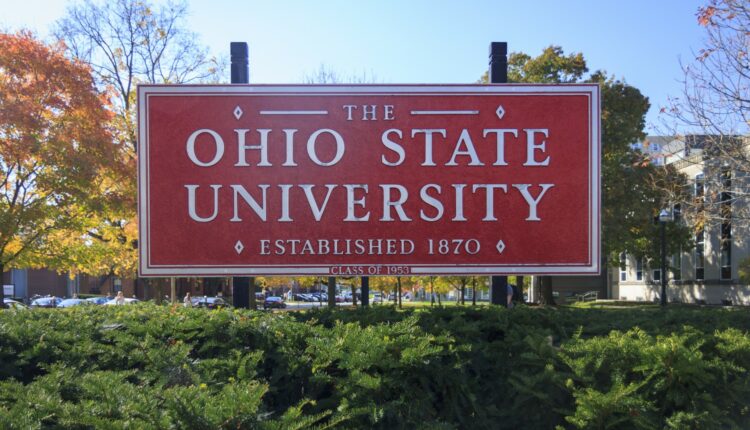Ohio State University: Recent federal grants for Ohio State medical research total $55.5 million
Medical research teams at The Ohio State University have received four federal awards totaling $55.5 million in funding in the past few months.
The grants support the study of a variety of neurological disorders as well as creation of a knowledge bank that will serve as a national resource for multidisciplinary expertise in maternal and pediatric therapeutics.
These awards have arrived on the heels of the Ohio State College of Medicine’s record-high research funding from the National Institutes of Health during the 2021 fiscal year – $195 million in grants, contracts and subcontracts. In all, the college’s FY21 research funding totaled $301.9 million, the second highest level of research funding during a fiscal year in the school’s history, with the remaining awards coming from other government agencies, nonprofit foundations and industry contracts.
“The continued growth in research funding at the Ohio State University College of Medicine underscores our commitment and expertise in the investigative process that leads to pioneering biomedical discoveries,” said Carol Bradford, dean of the College of Medicine and vice president for health sciences at The Ohio State University Wexner Medical Center. “It’s through these vital research dollars that our faculty, staff and learners are able to translate findings in the lab to treatments at the bedside.”
Four multimillion-dollar grants were announced in September.
A five-year, $17.1 million grant will fund the creation of a knowledge bank to support the study of drugs and medical treatments for pregnant and lactating women and children, aiming to fill research gaps and improve understanding of how drugs act in and interact with the body in these populations. The Eunice Kennedy Shriver National Institute of Child Health and Human Development award to the departments of biomedical informatics, obstetrics and gynecology, and pediatrics will help establish the Maternal and Pediatric Precision in Therapeutics Data, Model, Knowledge and Research Coordination Center.
“In addition to developing the pharmacology knowledge base, we will coordinate research activities, promote educational opportunities and model the interactions between drugs and pregnant and lactating women and their children,” said Lang Li, principal investigator and professor and chair of biomedical informatics. “Artificial intelligence and machine learning are the true innovations behind our data integration and model development.”
The National Institute of Neurological Disorders and Strokes has allocated $16 million toward a seven-year multicenter research project led by Ohio State that will compare inpatient rehabilitation treatments for traumatic brain injuries (TBI).
The “CARE-4-TBI” project involves the Ohio Regional TBI Model System along with 14 other TBI Model System sites across the United States that provide brain injury care and rehabilitation to assist individuals with returning home and re-entering their community.
“We’ll determine which rehabilitation strategies work best for patients by leveraging the infrastructure of the TBI Model Systems, capturing treatment data from standardized electronic medical records and using advanced statistical methods to compare the effectiveness of different treatment approaches,” said principal investigator Jennifer Bogner, professor of physical medicine and rehabilitation.
A $14.6 million award from The National Institute of Neurological Disorders and Stroke will accelerate research led by Ohio State to further evaluate the safety and effectiveness of gene therapy to treat a rare genetic disorder called AADC (aromatic L-amino acid decarboxylase) deficiency, which causes severe physical and developmental disabilities in children. This research will build on previous work at Ohio State and the University of California, San Francisco using targeted delivery of gene therapy to the midbrain to treat the deadly neurodevelopmental disorder.
“Without this enzyme, children lack muscle control, and are usually unable to speak, feed themselves or even hold up their head. They also suffer from seizure-like episodes … that can last for hours,” said principal investigator Dr. Krystof Bankiewicz, professor of neurological surgery. “Delivery of a functional copy of the AADC gene would significantly reduce suffering in afflicted patients and pave the way for registration of other gene therapies for neurological disease.”
A National Institute on Aging grant will support creation of an interdisciplinary resource network for Alzheimer’s disease and related dementias. The award, expected to total $7.8 million over five years, brings together Ohio State researchers with clinical scientists at the University of Washington, neuroscientists at the University of Texas Medical Branch and structural biologists at the University of California, Los Angeles.
The project stems from the National Alzheimer’s Project Act of 2012 calling for a national plan to prevent and treat Alzheimer’s disease by 2025 and emphasizing the importance of accelerating efforts to identify early and pre-symptomatic disease stages at the molecular level. The resource network supports this strategy by providing researchers with tools needed to reliably detect disease in experimental models and by raising the standards of rigor and reproducibility in Alzheimer’s disease research.
“By establishing the gold standard for their analysis and detection, and then distributing well-vetted samples to research laboratories across the country, we hope to catalyze advancements in the diagnosis and treatment of this devastating disease,” said principal investigator Jeff Kuret, professor of biological chemistry and pharmacology.

